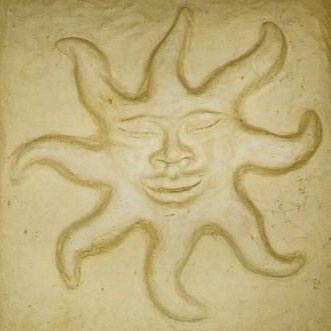Earthbuilding Design
Thermal performance of earth buildings
Passive Solar principles should be a key element of any house design but is especially important for earth buildings.
Earth buildings are not warm in winter unless they are designed for the sun. It is important to consider where the sun will be throughout the year in order to optimize the building orientation and room layout. Adequate direct sunlight should be allowed to enter an earth building especially in winter to take advantage of the thermal mass of earth walls. For the comfort of the occupants, it is of equal importance to keep out the hotter summer sun through the careful placement of overhangs, pergolas with appropriate plants, eaves and verandas.
The need for big eaves for weather protection often makes it hard to effectively harvest solar energy. Some sites are not ideal in terms of sun angles or micro climate.
The high density of earth and the fact that the material reacts rather slow to changes in temperature (heats up more slowly but holds the heat for longer, than for example concrete or stone) makes it an ideal thermal mass material. Unstabilised earth is a very dry and breathable building material, which regulates indoor humidity. But the insulating properties of earth are very modest.
Normal adobe bricks can fulfill minimum requirements for the amended energy efficiency requirements of the Building Code (H1). We recommend however that people achieve more than the minimum requirement and build a home that is truly comfortable to live in and requires little in terms of heating. We suggest the following solutions:
- When using normal adobe bricks for load-bearing walls we always recommend the expertise of a professional designer specialized in passive solar design. We also suggest people additionally insulate at least their south walls. Our system of choice would be wool insulation with a cladding, because wool is a natural insulation material with low embodied energy and similar hygroscopic qualities to earth.
- Some people opt for a conventional timber construction with insulation and cladding and interior adobe brick veneer walls for thermal mass. These houses make use of all the good qualities of earth on the interior, but do not require big overhangs and are thus very suited for passive solar design. From experience, the houses utilizing this system have the best thermal performance.

- Using the new generation light adobe bricks for exterior walls with improved insulation values, and normal heavy adobes for internal walls as thermal mass. The light adobes have to be solid plastered and we recommend a lime plaster with lime wash or silicate paint. This system is proven to be very durable. The size of overhangs and eaves can be decreased, thus improving the harvest of solar energy. The interior surface of the light adobes can be plastered with an earthen plaster to match the other adobe bricks and guarantee full breathability of the walls.
Structural Design
We work closely with engineers and designers who have got a lot of experience in the structural design of earth buildings. The integrated designs are adapted to the seismic and climatic conditions here in New Zealand and ensure that the inherent advantages of building with earth are maximized.
The underlying principles of structural design are firstly to keep all stresses in the earth material in compression, since the tensile strength of earth building materials are low; secondly all structural components should be tied securely together. We recommend that a continuous reinforced concrete footing, roof or ceiling diaphragm or bond beam be used to increase stability. The structural design may require vertical and horizontal reinforcement of the earth walls particularly in New Zealand with regard to the risk of earthquakes.
Because of their weight, earth buildings require stable sites. Obviously the site shouldn't flood and ideally isn't exposed to heavy driving rains. Damp climatic conditions however are fine.
Our earth building products surpass all requirements as specified in the Earth building Standards.
Earth Building Standards
We are very lucky in New Zealand to have Earthbuilding Standards who are integral part of the Building Code. Make sure your designer and building consent authority know about them.
NZS 4297
1998 Engineering Design of Earth Buildings is primarily aimed at structural and performance aspects when designing an earth building. It is intended for use by structural engineers.
NZS 4298
1998 Materials and Workmanship of Earth Buildings defines the materials and workmanship requirements for the use of unfired earth in the form of adobe, pressed earth brick, rammed earth or poured earth. Tests and the required results are detailed so that assurance can be given that the earthbuilding material will meet building code requirements.
NZS 4299
1998 Earth Buildings not requiring Specific Design sets down the design and construction requirements for adobe, pressed earth brick and rammed earth buildings not requiring specific design by an engineer. It is intended to provide a basis for the detailing of houses and small buildings.
Available from Standard New Zealand website. Search for "4299"
Adobe Brick Specifications
Specifications for load-bearing adobe and Specification for adobe brick veneer can be downloaded from our technical information.
These worksheets have been developed by SOLID EARTH LTD in collaboration with an experienced structural engineer and an architect.
